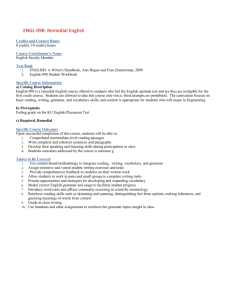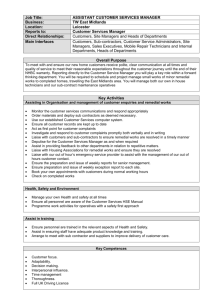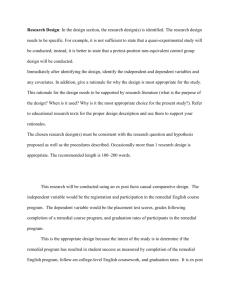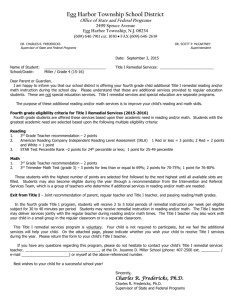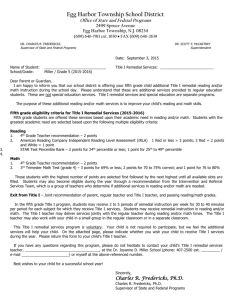Chapter 14: Coastal Risk Register 1. Introduction
advertisement
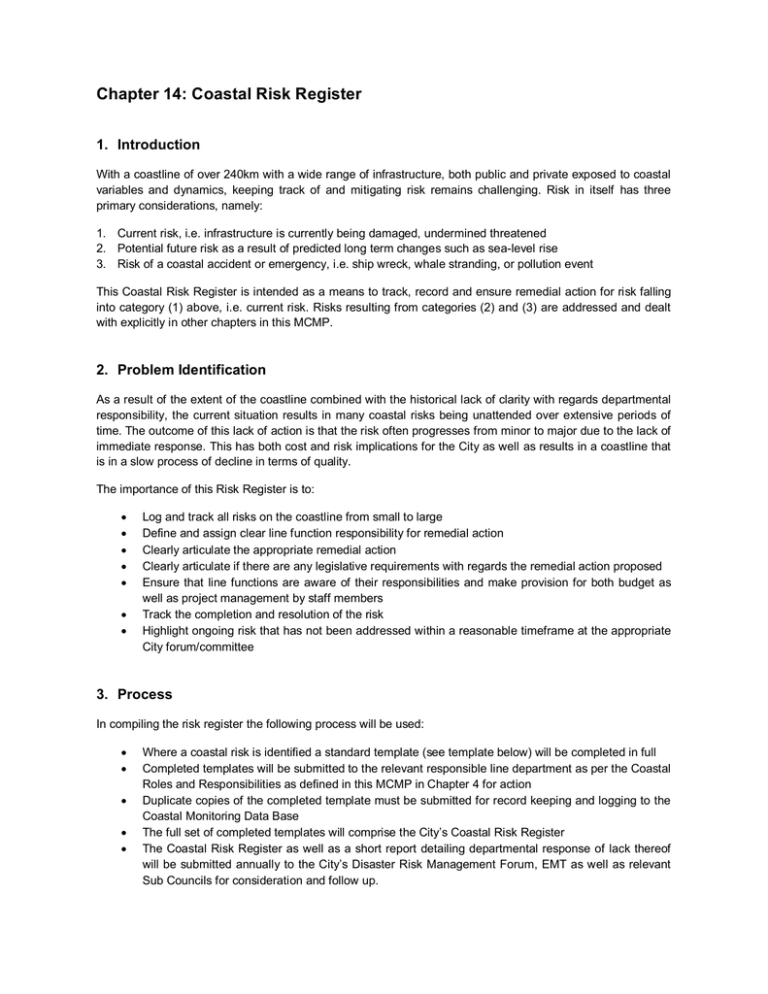
Chapter 14: Coastal Risk Register 1. Introduction With a coastline of over 240km with a wide range of infrastructure, both public and private exposed to coastal variables and dynamics, keeping track of and mitigating risk remains challenging. Risk in itself has three primary considerations, namely: 1. Current risk, i.e. infrastructure is currently being damaged, undermined threatened 2. Potential future risk as a result of predicted long term changes such as sea-level rise 3. Risk of a coastal accident or emergency, i.e. ship wreck, whale stranding, or pollution event This Coastal Risk Register is intended as a means to track, record and ensure remedial action for risk falling into category (1) above, i.e. current risk. Risks resulting from categories (2) and (3) are addressed and dealt with explicitly in other chapters in this MCMP. 2. Problem Identification As a result of the extent of the coastline combined with the historical lack of clarity with regards departmental responsibility, the current situation results in many coastal risks being unattended over extensive periods of time. The outcome of this lack of action is that the risk often progresses from minor to major due to the lack of immediate response. This has both cost and risk implications for the City as well as results in a coastline that is in a slow process of decline in terms of quality. The importance of this Risk Register is to: Log and track all risks on the coastline from small to large Define and assign clear line function responsibility for remedial action Clearly articulate the appropriate remedial action Clearly articulate if there are any legislative requirements with regards the remedial action proposed Ensure that line functions are aware of their responsibilities and make provision for both budget as well as project management by staff members Track the completion and resolution of the risk Highlight ongoing risk that has not been addressed within a reasonable timeframe at the appropriate City forum/committee 3. Process In compiling the risk register the following process will be used: Where a coastal risk is identified a standard template (see template below) will be completed in full Completed templates will be submitted to the relevant responsible line department as per the Coastal Roles and Responsibilities as defined in this MCMP in Chapter 4 for action Duplicate copies of the completed template must be submitted for record keeping and logging to the Coastal Monitoring Data Base The full set of completed templates will comprise the City’s Coastal Risk Register The Coastal Risk Register as well as a short report detailing departmental response of lack thereof will be submitted annually to the City’s Disaster Risk Management Forum, EMT as well as relevant Sub Councils for consideration and follow up. 4. Risk Identification The purpose of the Risk Register is to log and track all levels of current coastal risk and as such will include all levels and scales of risk from broken gabion cages, disintegrating boardwalks, collapsing sea walls through to wide-scale coastal erosion at the scale of Table Bay. Risk Register Template DATE OF ISSUE: PREPARED BY: PHOTOGRAPHIC RECORD OF RISK RESPONSIBLE DEPARTMENT FOR REMEDIAL ACTION RESPONSIBLE PERSON OR DISTRICT MANAGER FOR REMEDIAL ACTION RECOMMENDED REMEDIAL ACTION REQUIRED: LEVEL OF PRIORITY LEGISLATIVE REQUIREMENTS/STANDARDS APPLICABLE FOR REMEDIAL ACTION: RECORD OF COMPLETED REMEDIAL ACTION DATE COMPLETED: REMEDIAL ACTION UNDERTAKEN: BY: Example of completed template DATE OF ISSUE: 17/05/2013 PHOTOGRAPHIC RECORD OF RISK PREPARED BY: Gregg Oelofse RESPONSIBLE DEPARTMENT FOR REMEDIAL ACTION RESPONSIBLE PERSON OR DISTRICT MANAGER FOR REMEDIAL ACTION RECOMMENDED REMEDIAL ACTION REQUIRED: LEVEL OF PRIORITY LEGISLATIVE REQUIREMENTS/STANDARDS APPLICABLE FOR REMEDIAL ACTION: RECORD OF COMPLETED REMEDIAL ACTION DATE COMPLETED: REMEDIAL ACTION UNDERTAKEN: BY:

